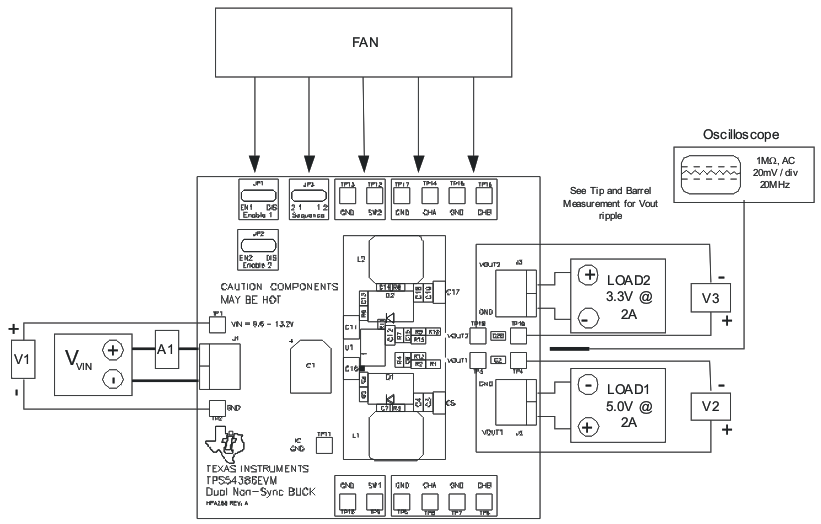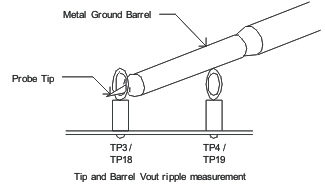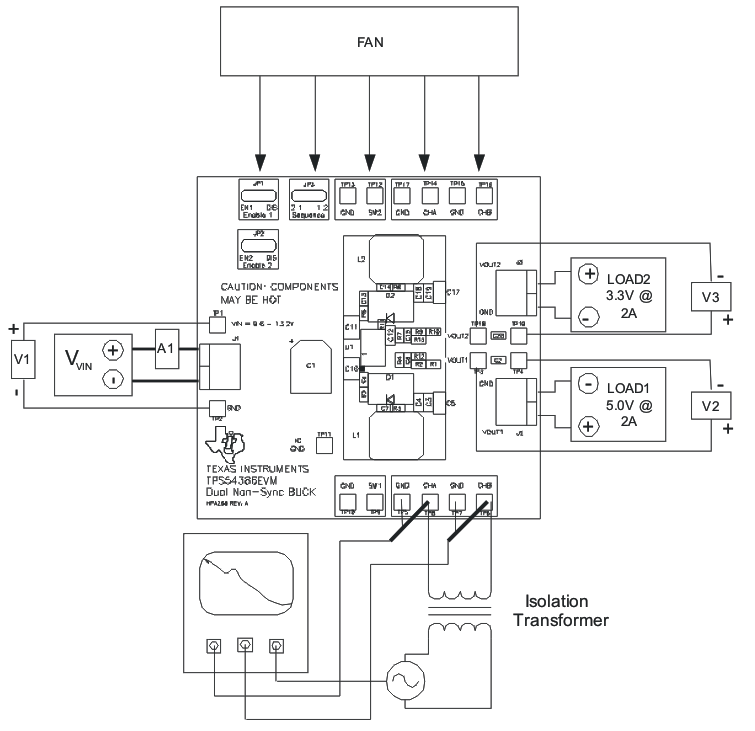SLUU286A March 2008 – October 2021 TPS54286 , TPS54386
- Trademarks
- 1Introduction
- 2TPS54386EVM Electrical Performance Specifications
-
3Schematic
- 3.1 Sequencing Jump (JP3)
- 3.2 Enable Jumpers (JP1 and JP2)
- 3.3
Test Point Descriptions
- 3.3.1 Input Voltage Monitoring (TP1 and TP2)
- 3.3.2 Channel 1 Output Voltage Monitoring (TP3 and TP4)
- 3.3.3 Channel 1 Loop Analysis (TP5, TP6, TP7 and TP8)
- 3.3.4 Channel 1 Switching Waveforms (TP9 and TP10)
- 3.3.5 TPS54386 Device Ground (TP11)
- 3.3.6 Channel 2 Switching Waveforms (TP12 and TP13)
- 3.3.7 Channel 2 Loop Analysis (TP14, TP15, TP16 and TP17)
- 3.3.8 Output Voltage Monitoring (TP18 and TP19)
- 44 Test Set Up
- 5TPS54386EVM Typical Performance Data and Characteristic Curves
- 6EVM Assembly Drawings and Layout
- 7List of Materials
- 8Revision History
4.2.2 Diagram
 Figure 4-1 TPS54386EVM Recommended Test Set-Up
Figure 4-1 TPS54386EVM Recommended Test Set-Up Figure 4-2 Tip and Barrel Measurement Technique (output ripple measurement using TP3 and TP4 or TP18 and TP19)
Figure 4-2 Tip and Barrel Measurement Technique (output ripple measurement using TP3 and TP4 or TP18 and TP19) Figure 4-3 Control Loop Measurement Setup
Figure 4-3 Control Loop Measurement Setup